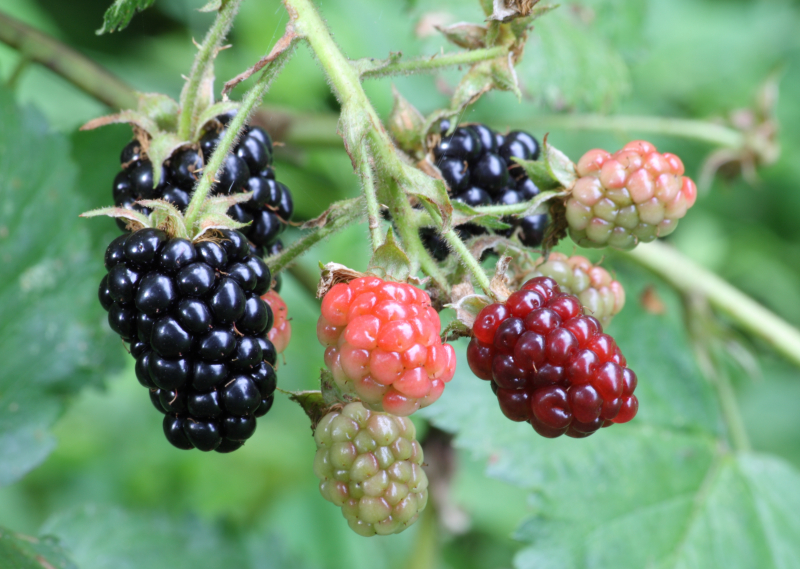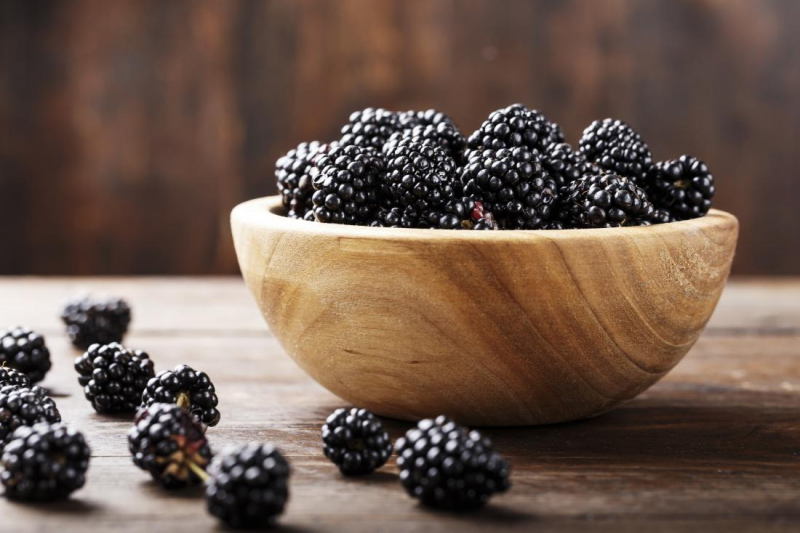Blackberry
The blackberry is an edible fruit produced by many species in the genus Rubus in the family Rosaceae, hybrids among these species within the subgenus Rubus, and hybrids between the subgenera Rubus and Idaeobatus. Blackberries are distinguished by their color, distinctive structure, and flavor. Blackberries, like raspberries, are not strictly berries; rather, they are an aggregation fruit made up of several drupes bound together by extremely tiny, almost invisible hairs. They have a solid, edible core rather than a hollow center. It has a rich inky sheen with purple tints when fully ripe. It is juicy, soft, and succulent. Their flavor is sweet, slightly tart, with earthy undertones.
Blackberries have a complicated evolutionary history, with native species found in Asia, Europe, North America, and South America. The most widely produced species in North America for commercial purposes is Rubus ursinus, which is native to the Pacific Northwest. The collective species Rubus fruticosus, which consists of six species, is found across Europe. In a temperate region with pleasant and humid weather, blackberries flourish. They are a good source of vitamins A and C, iron, calcium, and dietary fiber. Blackberries get their dark purple pigmentation from the phytonutrient anthocyanin, which also has antioxidant properties.












